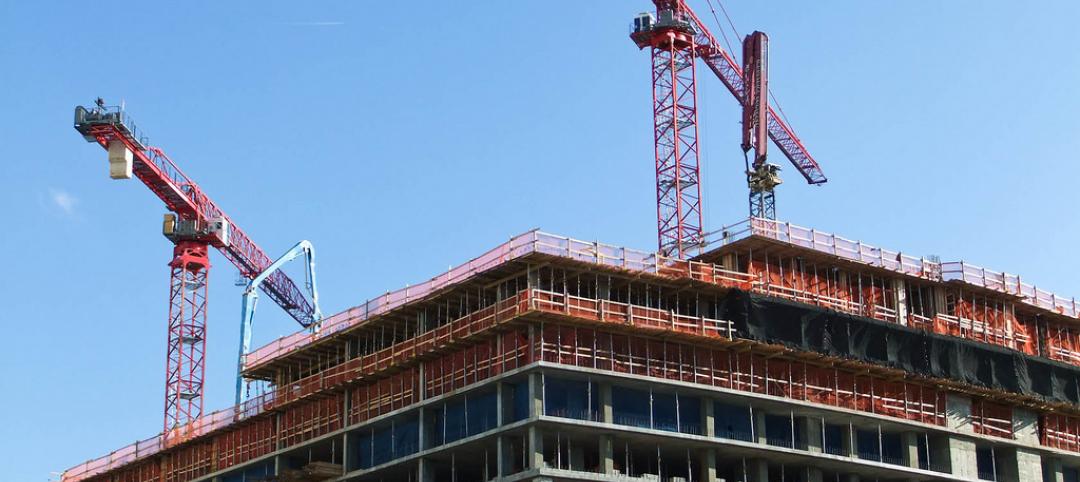Thirty-eight states and the District of Columbia added construction jobs between March 2017 and March 2018, while 29 states added construction jobs between February and March, according to an analysis by the Associated General Contractors of America of Labor Department data released today. Association officials said the job gains are coming amid strong private-sector demand and new public-sector investments in school and airport construction.
"Construction employment continues to expand in most parts of the country as private-sector demand remains strong and limited, new public investments in infrastructure are beginning to have an impact," said chief economist Ken Simonson. "The two greatest risks to future construction job growth are a lack of available, qualified workers and the potential impacts of new tariffs being imposed by and on the United States."
California added the most construction jobs (54,400 jobs, 6.8%) during the past year. Other states adding a large number of new construction jobs for the past 12 months include Texas (34,000 jobs, 4.8%); Florida (31,600 jobs, 6.3%); Pennsylvania (13,600 jobs, 5.6%) and Michigan (12,100 jobs, 7.5%). West Virginia (11.2%, 3,400 jobs) added the highest percentage of new construction jobs during the past year, followed by Nevada (9.0%, 7,500 jobs); Idaho (8.6%, 3,800 jobs); Massachusetts (7.7%, 11,500 jobs) and New Mexico (7.6%, 3,400 jobs).
Twelve states shed construction jobs between March 2017 and March 2018. North Dakota lost the highest total and percentage of construction jobs (-4,300 jobs, -14.8 percent), followed by Iowa (-3,900 jobs, -5.0 percent); Kansas (-2,500 jobs, -4.1%); Nebraska (-2,000 jobs, -3.8%) and New Jersey (-1,800 jobs, -1.2%). In addition to North Dakota, other states that lost a high percentage of construction jobs for the month included Iowa; Kansas; Nebraska and Hawaii (-2.4%, -900 jobs).
Twenty-nine states added construction jobs between February and March. Texas added the most (3,800 jobs, 0.5%), followed by Wisconsin (2,300 jobs, 1.9%); Florida (2,200 jobs, 0.4%); Michigan (1,600 jobs, 0.9%) and Missouri (1,400 jobs, 1.2%). Alaska added the highest percentage of construction jobs for the month (2.6%, 400 jobs), followed by Wisconsin; Iowa (1.8%, 1,300 jobs); Kentucky (1.3%, 1,000 jobs) and Missouri.
Nineteen states and the District of Columbia lost construction jobs between February and March, while construction employment was unchanged in Vermont and Wyoming. New York lost the most construction jobs for the month (-5,200 jobs, -1.3%), followed by California (-4,400 jobs, -0.5%); New Jersey (-1,400 jobs, -0.9%); Arizona (-1,200 jobs, -0.8%) and Minnesota (-1,000 jobs, -0.8%). Rhode Island lost the highest percentage of construction jobs (-2.6%, -500 jobs), followed by Hawaii (-1.9%, -700 jobs); West Virginia (-1.7%, -600 jobs); South Dakota (-1.7%, -400 jobs) and New York.
Association officials said the widespread job gains were welcome news, but cautioned that new tariffs announced by the Trump administration and counter measures from other trading partners could undermine demand for construction of shipping, logistics and manufacturing facilities. "There are better ways to address trade imbalances than by undermining domestic economic growth," said Stephen E. Sandherr, the association's chief executive officer.
View the state employment data by rank and state. View the state employment map.
Related Stories
Airports | Aug 31, 2015
Experts discuss how airports can manage growth
In February 2015, engineering giant Arup conducted a “salon” in San Francisco on the future of aviation. This report provides an insight into their key findings.
Healthcare Facilities | Aug 28, 2015
Hospital construction/renovation guidelines promote sound control
The newly revised guidelines from the Facilities Guidelines Institute touch on six factors that affect a hospital’s soundscape.
Healthcare Facilities | Aug 28, 2015
7 (more) steps toward a quieter hospital
Every hospital has its own “culture” of loudness and quiet. Jacobs’ Chris Kay offers steps to a therapeutic auditory environment.
Healthcare Facilities | Aug 28, 2015
Shhh!!! 6 ways to keep the noise down in new and existing hospitals
There’s a ‘decibel war’ going on in the nation’s hospitals. Progressive Building Teams are leading the charge to give patients quieter healing environments.
Mixed-Use | Aug 26, 2015
Innovation districts + tech clusters: How the ‘open innovation’ era is revitalizing urban cores
In the race for highly coveted tech companies and startups, cities, institutions, and developers are teaming to form innovation hot pockets.
Contractors | Aug 19, 2015
FMI's Nonresidential Construction Index Report: Recovery continues despite slow down
The Q3 NRCI dropped to 63.6 from the previous reading of 64.9 in Q2, painting a mixed picture of the state of the nonresidential construction sector.
Giants 400 | Aug 7, 2015
GOVERNMENT SECTOR GIANTS: Public sector spending even more cautiously on buildings
AEC firms that do government work say their public-sector clients have been going smaller to save money on construction projects, according to BD+C's 2015 Giants 300 report.
Giants 400 | Aug 7, 2015
K-12 SCHOOL SECTOR GIANTS: To succeed, school design must replicate real-world environments
Whether new or reconstructed, schools must meet new demands that emanate from the real world and rapidly adapt to different instructional and learning modes, according to BD+C's 2015 Giants 300 report.
Giants 400 | Aug 7, 2015
MULTIFAMILY AEC GIANTS: Slowdown prompts developers to ask: Will the luxury rentals boom hold?
For the last three years, rental apartments have occupied the hot corner in residential construction, as younger people gravitated toward renting to be closer to urban centers and jobs. But at around 360,000 annual starts, multifamily might be peaking, according to BD+C's 2015 Giants 300 report.
Giants 400 | Aug 7, 2015
UNIVERSITY SECTOR GIANTS: Collaboration, creativity, technology—hallmarks of today’s campus facilities
At a time when competition for the cream of the student/faculty crop is intensifying, colleges and universities must recognize that students and parents are coming to expect an education environment that foments collaboration, according to BD+C's 2015 Giants 300 report.

















